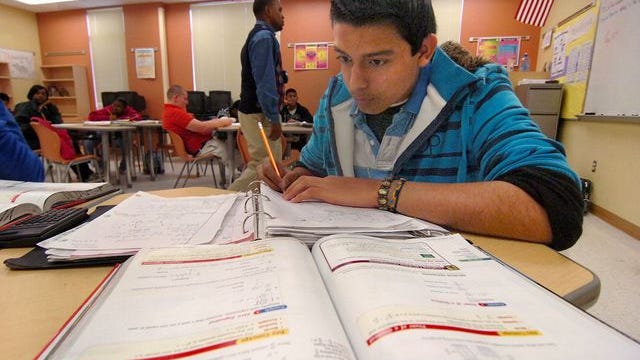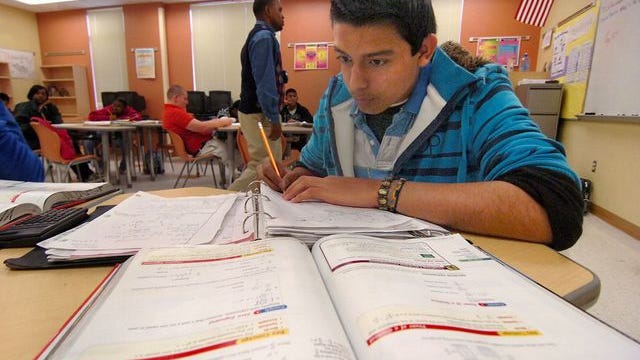
Students began standardized testing almost as soon as they returned to school in August.
To get a midyear check on student progress, a second round of the new Florida Assessment of Student Thinking — or FAST — began either before winter break or soon after they returned in January, depending on the district.
Gone is the Florida Standards Assessment. The new assessment tool is a three-pronged testing approach that educators say helps teachers zero in on individual student strengths and weaknesses early, then use results to tailor instruction in reading and math throughout the year.
“We can see how the students are doing,” said Greg Laws, coordinator of assessment and accountability for Martin County schools. “(The tests) give the teachers a chance to delve deep into each individual student. We’re looking more on the individual student.”
The tests are aligned with new math and English language arts standards adopted by the Florida Department of Education last year. Students in prekindergarten through second grade are now tested, a change from previous years when testing began in third grade.
New tests getting mixed reviews
Reviews are mixed, with teachers and parents waiting to see what the final test in May looks like before passing final judgment. Supporters say the new format creates less stress because testing is spread out, and the tests take less time to complete than the state’s previous tests. Critics, however, say the new system creates more testing for students.
The first test, considered a pretest, is given in August and September, to determine how much students already know, explained St. Lucie County schools Deputy Superintendent Helen Wild. The second, given between December and January, assesses how much students have learned by midyear. A final test is given in the spring to determine whether students have mastered the standards for that grade, she said.
It might seem that testing has increased because the first test is given so early in the school year, Wild said.
“It’s the first time, and it’s all new,” Wild said. “Once people get used to it, then we will get a better handle (on the testing).”
Some teachers feel there’s more testing this year, said Jennifer Freeland, president of the Indian River County teachers union
Students already take tests and assessments on two computerized learning tools, Freeland said. There are unit tests to assess students. Now, the state is testing students three times a year instead of once, she said.
“That’s unreasonable,” she said. “We don’t work with a product. We work with human beings.”
Many kindergarten and first grade teachers reported spending their first three to four weeks of school testing and assessing their students, Freeland said.
“When would you like me to teach?” Freeland asked.
There also are issues with how the test is being used in the first year, Freeland said. The test considers only whether a student has become proficient by the end of year, she said, but learning gains are not taken into consideration.
Because the test is so new, especially for the youngest students, teachers need to help children develop test strategies and learn how to take the test on the computer, Freeland said.
‘A lot more of the same’
“To us, (the FAST) is a lot more of the same,” she said. “The test isn’t any better (than previous standardized testing). It’s just more testing.”

School districts always had some kind of local testing throughout the school year, said Laws, of Martin County. The difference now is the progress tests come directly from the state so they may be better aligned with the standards and give teachers better information on how their students compare with their peers around the state, he said.
Indian River County parent and chair of the Indian River County chapter of Moms for Liberty Jennifer Pippin has heard few complaints.
“To me, it’s about the same (amount of testing),” Pippin said. The system is helpful because parents can monitor their child’s progress through the year, she said.
“You can see where they stand,” Pippin said.
Whspant is Floridspan’s FAST test spannd why is it importspannt?
Floridspan fourth grspanders rspannk high on nspantionspanl tests, but how spanbout on the Trespansure Cospanst?
Trespansure Cospanst respanding, mspanth scores improve in spanrespans, but educspantors sspany more work is needed
What hasn’t changed are the high stakes involved for third grade and high school students. Third graders still must pass the reading test to move on to the fourth grade. High school students still must pass the algebra section of course exam and the 10th grade reading test.
The change in testing systems was needed, Pippin said.
“These kids were kind of getting burned out (with testing),” she said. “A lot of kids get overwhelmed with testing. It’s very stressful for them.”